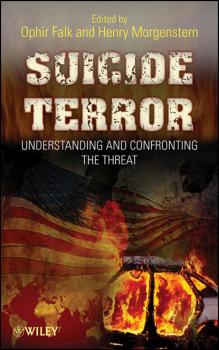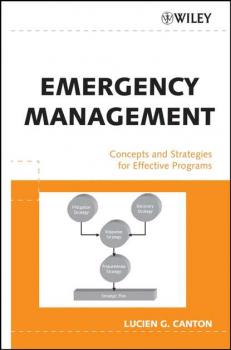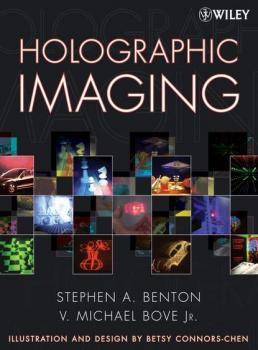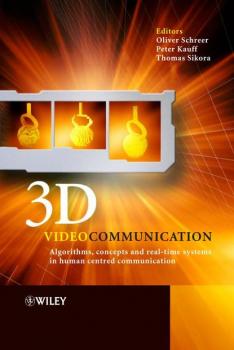MREADZ.COM - много разных книг на любой вкус
Скачивание или чтение онлайн электронных книг.Suicide Terror
Ophir Falk and Henry Morgenstern have compiled a book that should be read by anyone who is serious about winning the war on terror. By painstakingly analyzing the empirical data, they help us better understand the nature of our enemies and why they employ these barbaric tactics. Most crucially, they offer important insights on how terrorism can be effectively confronted and ultimately defeated. In so doing, they have performed an invaluable service for all those who are committed to winning this crucial battle.—Benjamin Netanyahu, Prime Minister of Israel FIRSTHAND ACCOUNTS AND ANALYSES FROM FRONTLINE PERSONNEL AND EXPERTS IN THE WAR AGAINST TERROR Based on U.S. and Israeli experiences and detailed interviews with frontline personnel, Suicide Terror enables policymakers, first responders, and students of homeland security to understand and deal with the growing threat of suicide terror. It analyzes recent suicide attacks as well as our current vulnerabilities and high-risk scenarios for future attacks. Following the expert authors' advice, readers learn possible measures to prevent an attack. Moreover, they learn how to prepare for and implement an effective and quick response to minimize casualties and losses in the event of an attack. Following an overview and historical review of suicide terror, the book covers: Global jihad Israel's confrontation with suicide terrorism America's experience with suicide bombings Internationalization of suicide terrorism High-risk scenarios and future trends Methods for confronting suicide terror Medical management of suicide terrorism Using eyewitness accounts, the text re-creates the look and feel of actual terrorism incidents. Detailed case studies help readers get into the minds of suicide terrorists in order to understand how to best prevent and confront these very dangerous threats. This book is a definitive study of suicide terror, synthesizing the experience of well-known Israeli and American experts who have dealt with it firsthand. Anyone responsible for understanding, preventing, and confronting this devastating threat should read this book and consider its recommendations with all seriousness.
Emergency Management
This book propounds an all-hazards, multidisciplinary approach to emergency management. It discusses the emergency manager’s role, details how to establish an effective, integrated program, and explores the components, including: assessing risk; developing strategies; planning concepts; planning techniques and methods; coordinating response; and managing crisis. Complete with case studies, this is an excellent reference for professionals involved with emergency preparedness and response.
Panoramic Imaging
Panoramic imaging is a progressive application and research area. This technology has applications in digital photography, robotics, film productions for panoramic screens, architecture, environmental studies, remote sensing and GIS technology. Applications demand different levels of accuracy for 3D documentation or visualizations. This book describes two modern technologies for capturing high-accuracy panoramic images and range data, namely the use of sensor-line cameras and laser range-finders. It provides mathematically accurate descriptions of the geometry of these sensing technologies and the necessary information required to apply them to 3D scene visualization or 3D representation. The book is divided into three parts: Part One contains a full introduction to panoramic cameras and laser range-finders, including a discussion of calibration to aid preparation of equipment ready for use. Part Two explains the concept of stereo panoramic imaging, looking at epipolar geometry, spatial sampling, image quality control and camera analysis and design. Part Three looks at surface modelling and rendering based on panoramic input data, starting with the basics and taking the reader through to more advanced techniques such as the optimization of surface meshes and data fusion. There is also an accompanying website containing high-resolution visual samples and animations, illustrating techniques discussed in the text. Panoramic Imaging is primarily aimed at researchers and students in engineering or computer science involved in using imaging technologies for 3D visualization or 3D scene reconstruction. It is also of significant use as an advanced manual to practising engineers in panoramic imaging. In brief, the book is of value to all those interested in current developments in multimedia imaging technology
Holographic Imaging
The only all-inclusive treatment of holography—from fundamental principles to the most advanced concepts While several existing texts cover different aspects of the field of holography, none provides a complete, up-to-date, and accessible view of its popular, scientific, and engineering aspects. Now, from an author team that includes one of the world's pioneers in the field, Holographic Imaging fills this need with a single, comprehensive text that covers the subject from traditional holography to the cutting-edge development of the world's most advanced three-dimensional holographic images, holographic printing, and holographic video. Written in an engaging and easy-to-follow style, Holographic Imaging promotes a hands-on approach to making holograms and provides readers with a working understanding of how and why they work. Following a brief introduction to the fundamentals of light and diffraction, coverage includes: the diffraction efficiency of gratings, «platonic» holography, a ray-tracing analysis of holography, holographic lenses and in-line «Gabor» holography, off-axis «Leith & Upatnieks» holography, non-laser illumination of holograms, phase conjunction and real image projection, full-aperture transfer holography, white-light transmission «rainbow» holography, practical issues in rainbow holography, in-line «Denisyuk» reflection holography, off-axis reflection holography, edge-lit holography, computational display holography, holographic printing, and holographic television. Helpful diagrams and equations that summarize the mathematical and physical principles for each technique discussed make this an approachable resource for readers from a variety of backgrounds, including undergraduate and postgraduate students with an interest in optics, optoelectronics, and information display, as well as researchers, scientists, engineers, and technology-savvy artists.
3D Videocommunication
The migration of immersive media towards telecommunication applications is advancing rapidly. Impressive progress in the field of media compression, media representation, and the larger and ever increasing bandwidth available to the customer, will foster the introduction of these services in the future. One of the key components for the envisioned applications is the development from two-dimensional towards three-dimensional audio-visual communications. With contributions from key experts in the field, 3D Videocommunication: provides a complete overview of existing systems and technologies in 3D video communications and provides guidance on future trends and research; considers all aspects of the 3D videocommunication processing chain including video coding, signal processing and computer graphics; focuses on the current state-of-the-art and highlights the directions in which the technology is likely to move; discusses in detail the relevance of 3D videocommunication for telepresence systems and immersive media; and provides an exhaustive bibliography for further reading. Researchers and students interested in the field of 3D audio-visual communications will find 3D Videocommunication a valuable resource, covering a broad overview of the current state-of-the-art. Practical engineers from industry will also find it a useful tool in envisioning and building innovative applications.
Stream Hydrology
Since the publication of the first edition (1994) there have been rapid developments in the application of hydrology, geomorphology and ecology to stream management. In particular, growth has occurred in the areas of stream rehabilitation and the evaluation of environmental flow needs. The concept of stream health has been adopted as a way of assessing stream resources and setting management goals. Stream Hydrology: An Introduction for Ecologists Second Edition documents recent research and practice in these areas. Chapters provide information on sampling, field techniques, stream analysis, the hydrodynamics of moving water, channel form, sediment transport and commonly used statistical methods such as flow duration and flood frequency analysis. Methods are presented from engineering hydrology, fluvial geomorphology and hydraulics with examples of their biological implications. This book demonstrates how these fields are linked and utilised in modern, scientific river management. Emphasis on applications, from collecting and analysing field measurements to using data and tools in stream management. Updated to include new sections on environmental flows, rehabilitation, measuring stream health and stream classification. Critical reviews of the successes and failures of implementation. Revised and updated windows-based AQUAPAK software. This book is essential reading for 2nd/3rd year undergraduates and postgraduates of hydrology, stream ecology and fisheries science in Departments of Physical Geography, Biology, Environmental Science, Landscape Ecology, Environmental Engineering and Limnology. It would be valuable reading for professionals working in stream ecology, fisheries science and habitat management, environmental consultants and engineers.
Sensory Evaluation
This book is a practical guide to sensory evaluation methods and techniques in the food, cosmetic and household product industries. It explains the suitability of different testing methods for different situations and offers step-by-step instructions on how to perform the various types of tests. Covering a broad range of food and non-food product applications, the book is designed to be used as a practical reference in the testing environment; a training manual for new recruits into sensory science, and a course book for students undertaking industrial training or academic study.
Food Mixing
The mixing of liquids, solids and gases is one of the most common unit operations in the food industry. Mixing increases the homogeneity of a system by reducing non-uniformity or gradients in composition, properties or temperature. Secondary objectives of mixing include control of rates of heat and mass transfer, reactions and structural changes. In food processing applications, additional mixing challenges include sanitary design, complex rheology, desire for continuous processing and the effects of mixing on final product texture and sensory profiles. Mixing ensures delivery of a product with constant properties. For example, consumers expect all containers of soups, breakfast cereals, fruit mixes, etc to contain the same amount of each ingredient. If mixing fails to achieve the required product yield, quality, organoleptic or functional attributes, production costs may increase significantly. This volume brings together essential information on the principles and applications of mixing within food processing. While there are a number of creditable references covering general mixing, such publications tend to be aimed at the chemical industry and so topics specific to food applications are often neglected. Chapters address the underlying principles of mixing, equipment design, novel monitoring techniques and the numerical techniques available to advance the scientific understanding of food mixing. Food mixing applications are described in detail. The book will be useful for engineers and scientists who need to specify and select mixing equipment for specific processing applications and will assist with the identification and solving of the wide range of mixing problems that occur in the food, pharmaceutical and bioprocessing industries. It will also be of interest to those who teach, study and research food science and food engineering.
Fermented Milks
Highly profitable and an important range of products within the dairy industry worldwide, the economic importance of fermented milks continues to grow. Technological developments have led to a wider range of products and increased popularity with consumers. In the second book to feature in the SDT series Fermented Milks reviews the properties and manufacturing methods associated with products such as yoghurt, buttermilk, kefir, koumiss milk-based fermented beverages and many other examples from around the globe, offering the reader: A practically-oriented and user-friendly guide Key commercially important information Coverage of all the major stages of manufacture Background to each product Edited by Adnan Tamime, with contributions from international authors and full of core commercially useful information for the dairy industry, this book is an essential title for dairy scientists, dairy technologists and nutritionists worldwide.
Brined Cheeses
The Society of Dairy Technology (SDT) has joined with Blackwell Publishing to produce a series of technical dairy-related handbooks providing an invaluable resource for all those involved in the dairy industry; from practitioners to technologists working in both traditional and modern larged-scale dairy operations. Brined cheeses such as feta and halloumi have seen a large increase in popularity and as a result, increasing economic value. Over the past two decades the dairy industry has carried out much research into starter cultures alongside technological developments, widening the range of brined cheese products available to consumers worldwide. The third title in the SDT series, Brined Cheeses gathers research on this important range of cheese varieties from around the world into a single volume, offering the reader: A practically-oriented and user-friendly guide Key commercially important information Coverage of all the major stages of manufacture Background to each variety Review of how different varieties are utilised in different countries Edited by Adnan Tamime, with contributions from international authors and full of core commercially useful information for the dairy industry, this book is an essential title for dairy scientists, dairy technologists and nutritionists worldwide.









